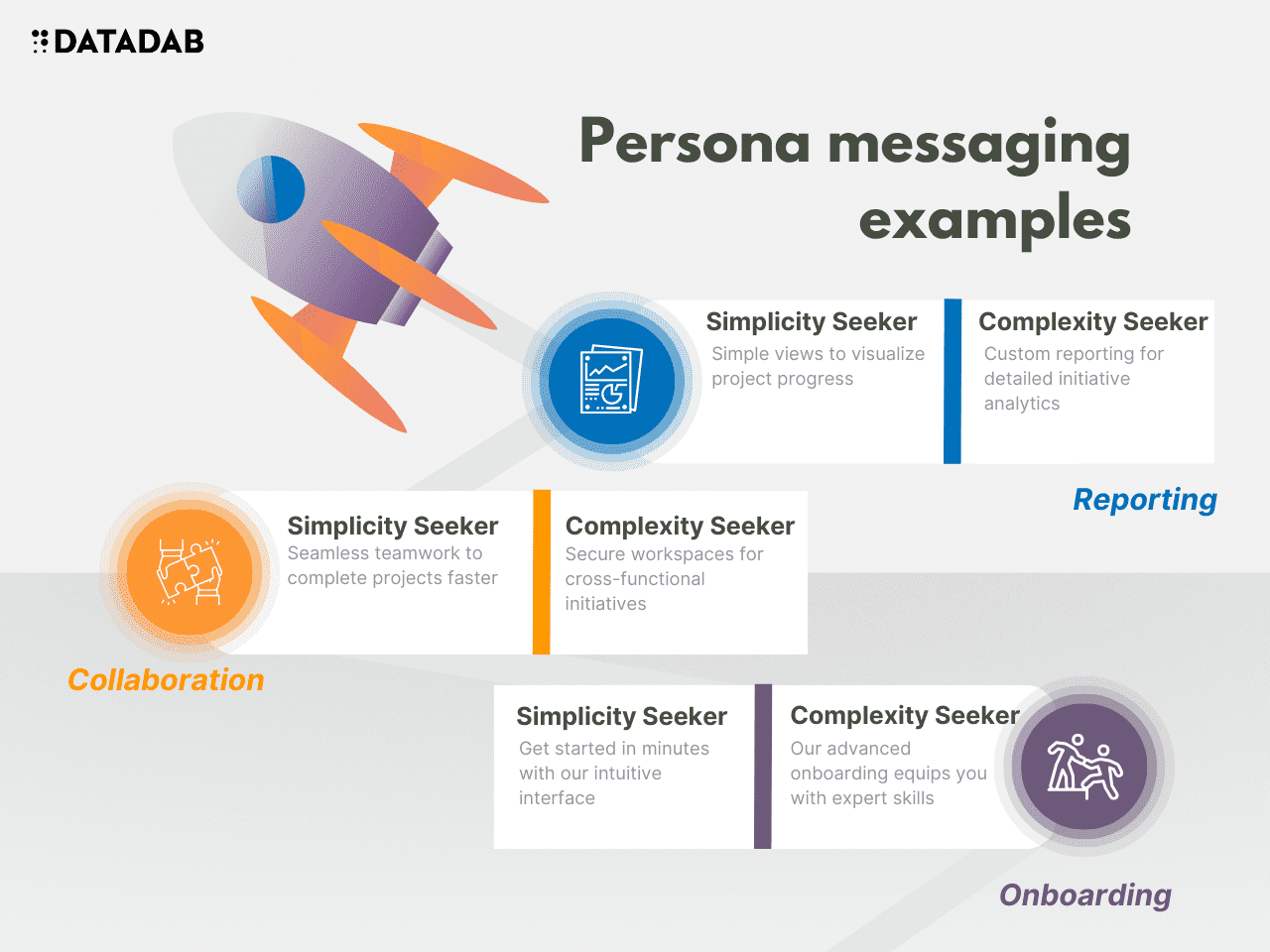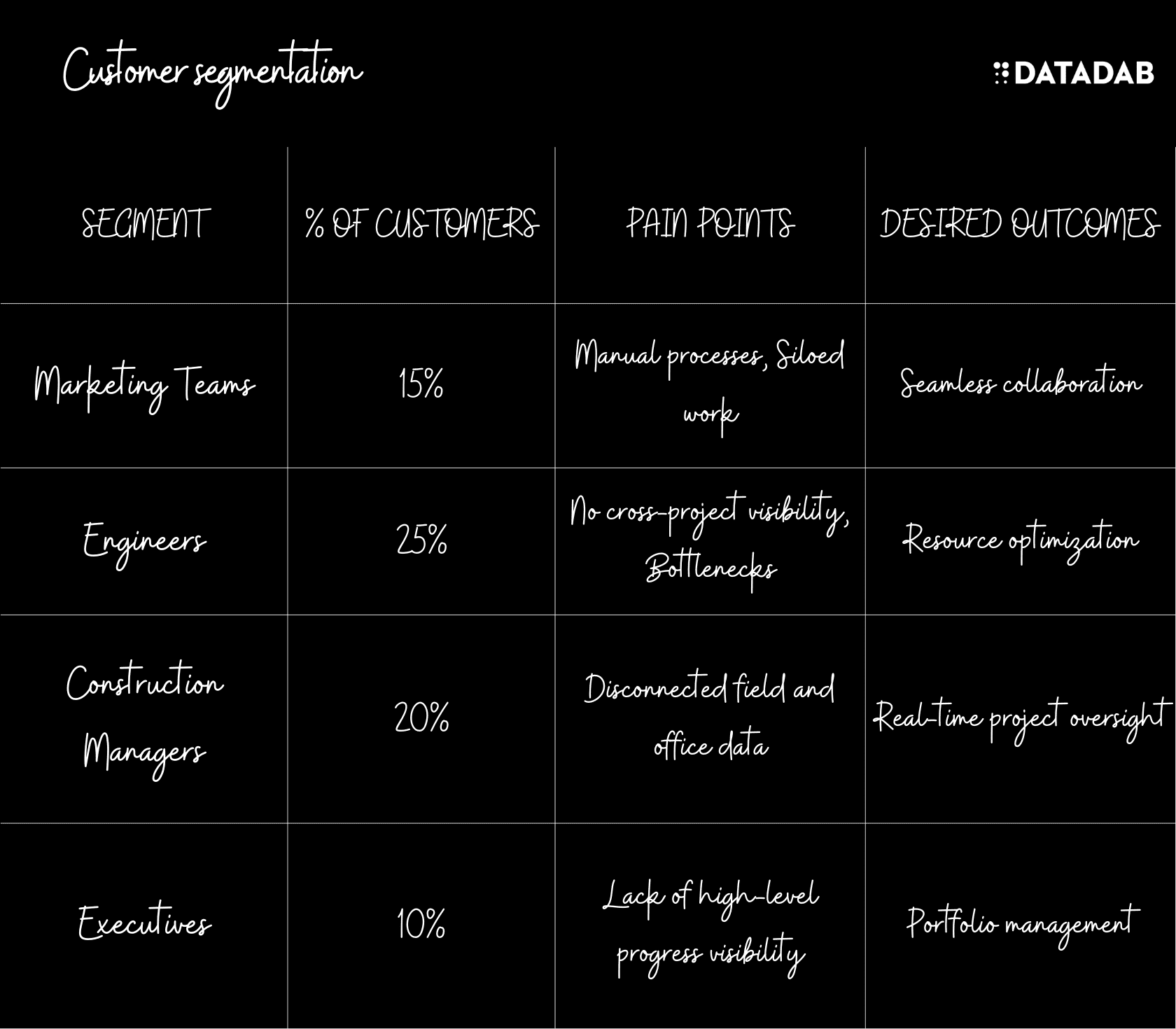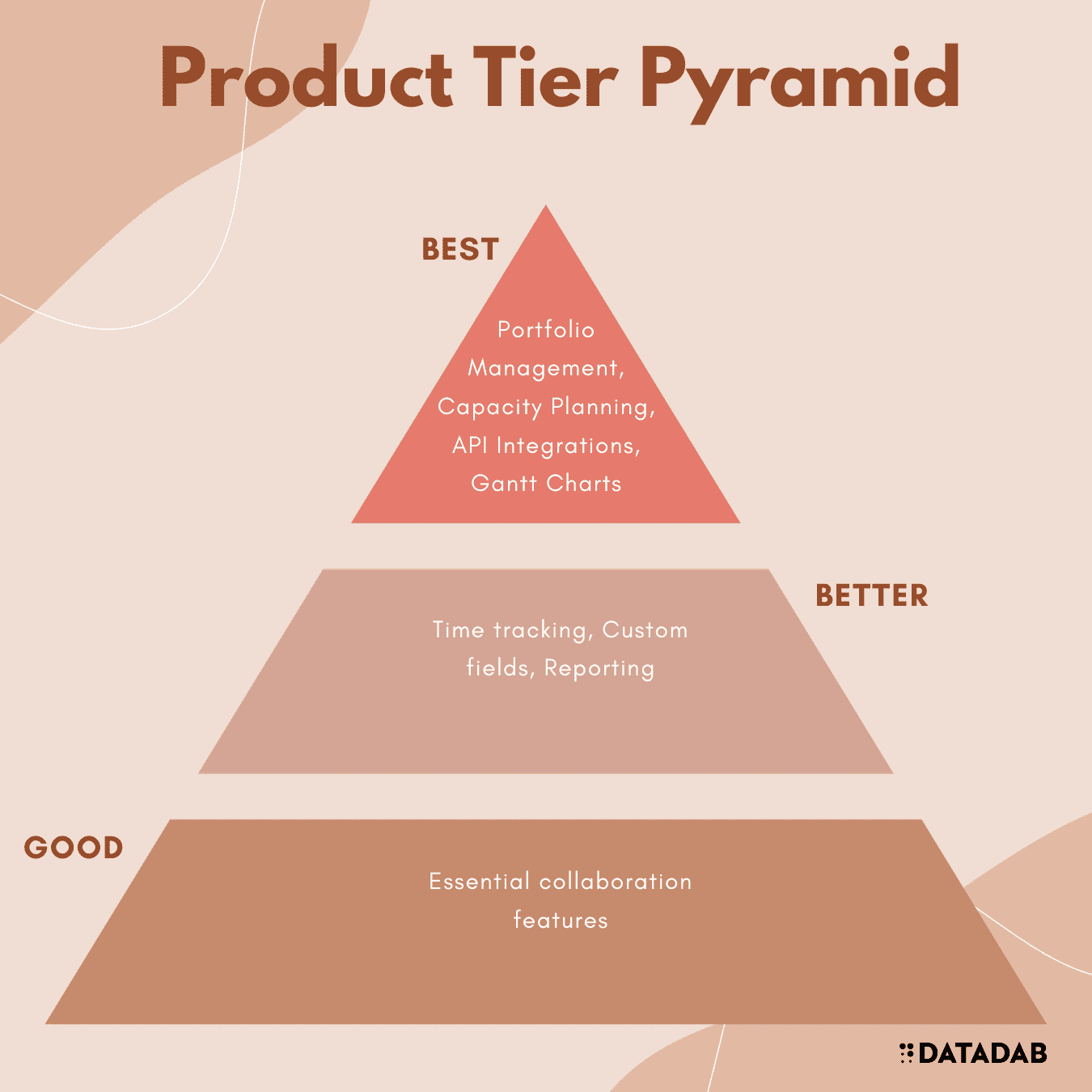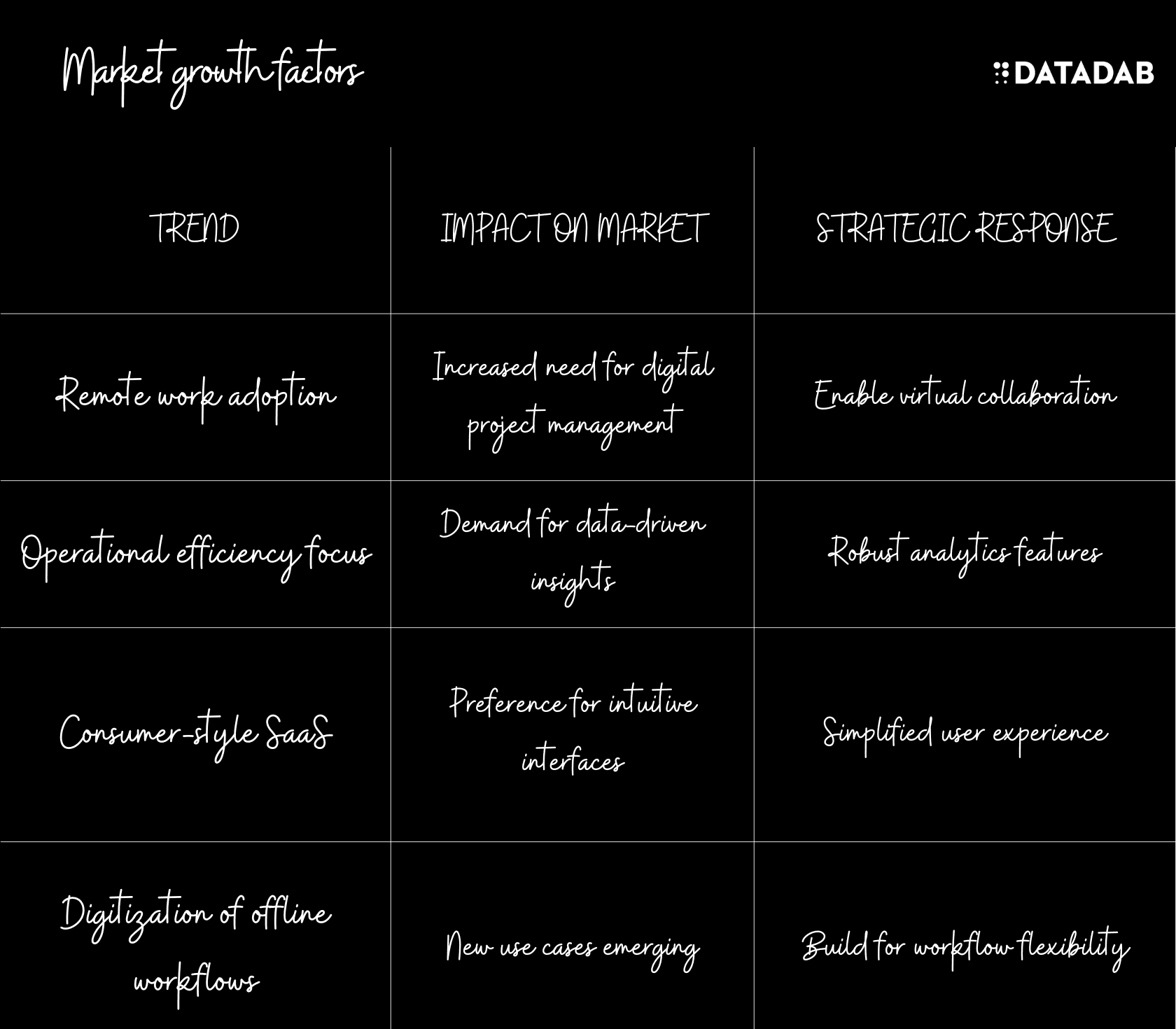"Simplify your approach but not your desires. Pursue complexity within a simple form."
As marketers for a Project Management Software company, we face an important strategic dilemma: How do we position our product amidst the simplicity versus complexity debate?
On one hand, the consumerization of SaaS pushes for radically simple and intuitive interfaces. Heavyweight features get in the way of adoption.
But on the other hand, many core users still want and need advanced capabilities. Removing complexity risks alienating these power users.
It's tempting to fully embrace one side - but that's a mistake. A single-minded simplicity or complexity focus will leave money on the table.
The most successful marketing strategy combines both simplicity and complexity positioning.
Let's explore how to achieve this duality across messaging, product packaging and pricing. Master these three areas and you can capture both enthusiast personas.

Messaging: Segment to Differentiate
Our messaging must balance simple collaboration and advanced project modeling. This starts with buyer persona segmentation.
Identify core personas on both sides:
Simplicity Seekers:
- Marketing coordinators
- HR business partners
- Accountants
- Agency creatives
Complexity Seekers:
- Construction managers
- Software project managers
- Product development leads
- Engineering project managers

These are very different users with distinct needs. Simplicity seekers want intuitive collaboration. Complexity seekers need hardcore analytics, reporting and integrations.
To attract both groups, develop separate campaigns tailored to each persona:

Customize your website, sales collateral, demo videos and ads accordingly. Speak directly to what matters most for each profile - simplicity or complexity.
With strategic segmentation, we broaden our appeal across the entire market. Both personas see how we can solve their unique problems.

Product: Good, Better, Best Packaging
Beyond messaging, we must also align our product packaging with user needs.
Take the following tiered approach:
Good Plan
Focus on simplicity and ease-of-use. Include just the essential collaboration features. Limit advanced functionality.
Better Plan
Build on the basics by adding more robust tools like time tracking, custom fields, and reporting. Appeal to specialists needing more power.
Best Plan
Go all-in on complexity. Include portfolio management, capacity planning, API integrations and Gantt charts. Target advanced teams.

This "good-better-best" packaging provides clear stepping stones between simplicity and complexity. Users can upgrade as their needs grow.
When demoing and trialing, pay close attention to which capabilities excite each persona. Guide them to the appropriate plan accordingly.
Packaging the platform in tiers aligned to needs removes friction for both groups. Simplicity seekers aren't overwhelmed, yet complexity seekers still get the depth they want.
Pricing: Hybrid Models
Packaging drives pricing strategy too. Set price points based on user value.
For our Good plan, lower pricing to attract general office workers who just need basic collaboration. This lands at $10/user/month.
For the Best plan with all the bells and whistles, charge a premium at $25/user/month to monetize power users.
The mid-tier Better plan strikes a balance at $15/user/month.
This hybrid approach balances affordability for simplicity seekers and revenue from complexity seekers. Avoid pricing too simplistically or too costly on either extreme.

Partnerships: Bridge the Gaps
One final go-to-market strategy - strategic partnerships.
Rather than mediocre bolt-on features, partner with best-of-breed complements. Work together to jointly serve customers.
If our tool skews towards simplicity, integrate with complex niche solutions. If we lean into complexity, partner with simpler tools.
Joint customers benefit from the best of both worlds:
- Simple platform for routine work
- Complex partner for specialized projects
Partnerships also unlock cross-selling opportunities into new segments. Expand beyond your typical buyer profiles.
Exploring mutually beneficial partnerships should be on every product marketer's roadmap. Use complements to extend your strengths and fill gaps.

Conclusion: Dual-Sided Marketing
Project management tools must avoid binary positioning. Simplicity or complexity. One or the other.
Savvy marketing requires a dual-sided strategy:
- Messaging that resonates across multiple personas
- Packaging tailored to both simplicity and complexity needs
- Hybrid pricing to balance affordability and revenue
- Partnerships to complete the puzzle
This is how we capture the full spectrum from collaborators to project modeling experts. Remove their unique friction points and meet differing needs.
Specialize within your strengths, but don't turn away other personas completely. Bridge the gaps through segmentation, packaging and partnerships.
Embrace the paradox. Complexity and simplicity together will drive growth further than either could alone.
Does this help outline an effective marketing strategy? Let me know if you need any clarification or have additional questions!
FAQ
1. Why is a dual simplicity and complexity strategy important for project management tools?
A dual strategy is critical because the market has bifurcated. Some users want lightweight collaboration, while others need hardcore analytics and customization. A one-size-fits-all approach will fail to resonate across these different personas. By combining simplicity and complexity positioning, you broaden appeal to the entire spectrum of needs. Use segmentation in messaging, packaging and partnerships to cater to both enthusiast groups.
2. How do you research target personas on both sides of simplicity and complexity?
Leverage quantitative and qualitative research:
- Quantitative: Segment your customer base by role, industry, usage patterns and other attributes to quantify the market size of each profile. Send out surveys to current users to assess needs.
- Qualitative: Conduct buyer interviews and user testing with people matching both enthusiasm groups. Ask about their pain points, desired outcomes and feature wishlists. Observe them using your product to identify areas of friction.
Build detailed personas combining hard data and anecdotal insights.
3. What messaging resonates best with simplicity seekers versus complexity seekers?
Simplicity seekers want to hear messaging like:
- Intuitive workflows requiring no training
- Seamless collaboration helping teams work better together
- Clean visual interfaces optimized for ease of use
Complexity seekers respond better to messaging like:
- Advanced analytics providing data-driven insights
- Custom reporting centralizing key project metrics
- Robust portfolio management optimizing resources
Test different messaging with each group and track engagement.
4. How do you structure pricing tiers to balance affordability and monetization?
Take a hybrid approach:
- Lower pricing on "Basic" plan to maximize affordability for simplicity seekers
- Premium pricing on "Pro" plan to maximize revenue from complexity seekers
- Mid-tier pricing on "Team" plan striking a balance for moderate needs
Set price points based on willingness-to-pay data for each persona. Optimize across acquisition, conversion and expansion.
5. When should you consider strategic partnerships to complement strengths and weaknesses?
Pursue partnerships when:
- Your tool lacks key features needed by certain personas
- You want to penetrate new segments beyond your core users
- Competitor partnerships shut you out of opportunities
- Joint success stories will build credibility with customers
Ideal partners fill gaps in your offering while you do the same for them.
6. How do you track performance of a dual-sided marketing strategy?
Key metrics to monitor:
- Persona response rates to tailored messaging and campaigns
- Conversion and retention rates by customer segment
- Churn analysis by simplicity vs. complexity personas
- Cross-sell and upsell rates in each segment
- LTV over time across personas and plans
Course correct messaging and packaging that underperforms with either group.
7. What risks come with a dual simplicity and complexity strategy?
Main risks:
- Inconsistent messaging dilutes positioning with both groups
- Trying to be all things to all users can make you mediocre for all
- Complexity seekers still prefer niche tools over generalists
- Simplicity seekers choose consumer-focused competitors
Mitigate through crisp, tailored messaging for each side.
8. How could economic changes impact the dual strategy?
In downturns, complexity seekers may cut spend and downgrade. Simplicity messaging will resonate more. Monitor willingness-to-pay fluctuations.
In growth periods, complexity seekers may adopt faster. Ensure advanced capabilities match needs.
Adjust strategy based on market conditions.
9. How does the dual strategy work for SMBs versus enterprises?
SMBs lean towards simplicity, while enterprises need customization.
For SMBs, focus on ease of use and seamless collaboration. For enterprises, emphasize advanced features and integrations.
Partners can help serve larger customers beyond your core strengths.
10. What happens if you focus on only simplicity or complexity?
With a simplicity-only focus, you'll fail to monetize and retain complexity seekers.
With a complexity-only focus, you'll slow adoption as simplicity seekers will find you too difficult.
Taking one side risks missing half the market. Dual positioning gives the broadest appeal.






